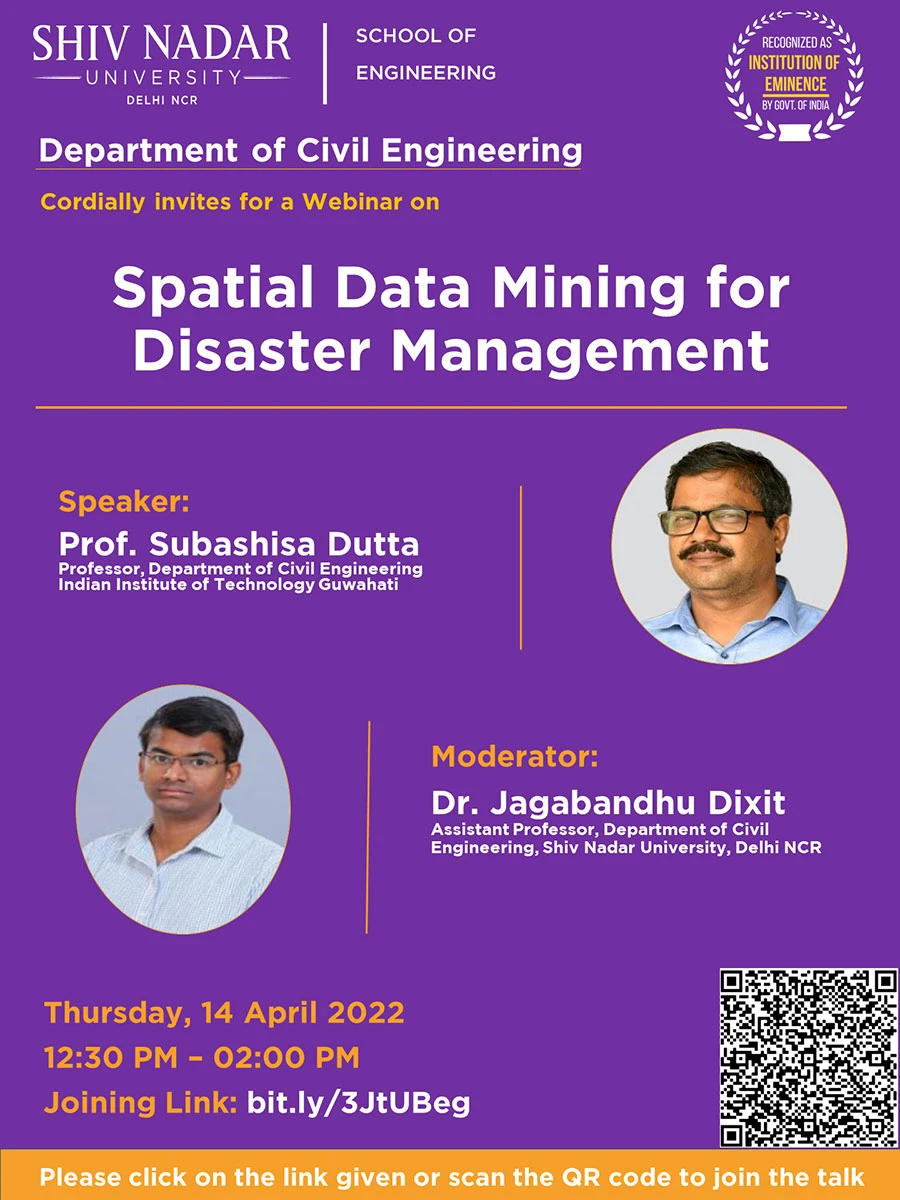Department of Civil Engineering organizing a webinar on 'Spatial Data Mining for Disaster Management'
The Department of Civil Engineering is delighted to invite you to an "Expert Talk" titled 'Spatial Data Mining for Disaster Management' by Prof. Subashisa Dutta (Professor, Department of Civil Engineering, IIT Guwahati) on 14 April 2022, Thursday from 12:30 PM to 2:00 PM. The session will be moderated by Dr. Jagabandhu Dixit, Assistant Professor, Department of Civil Engineering, Shiv Nadar University, Delhi-NCR.
A disaster, such as a flood, earthquake, or landslide, spreads through a geographical domain with varied severity and duration from its single/multiple source places. Natural elements (rivers, floodplains, marshes, and forest for flood disasters) and man-made facilities occupy the majority of the geographical space (reservoirs, embankment, high-rise houses, culverts, drainage network). Natural features change over longer time scales, such as the carrying capacity of rivers. Man-made disaster-reduction infrastructures, on the other hand, must not only gain socioeconomic acceptance, but also change their effectiveness over time (ageing effect of a dam
and embankment). We may utilize the spatial data mining concept on historical events to learn about disasters; source, propagation, and subsequent damages by considering their spatial and temporal variations.
In spatial data mining, spatial hotspots and their temporal evaluation for disasters can be efficiently mapped in a global geographical cloud dataset combined with locally gathered data from field sensors and people disaster resilience. Note that, new advanced techniques such as spatial auto-correlation and natural spatial clustering schemes can be used in plot-scale disaster vulnerability mapping, which is essential for disaster preparedness and near-real-time rescue operations. The prediction of a disaster with a lead time of a few minutes, hours, or days is now possible by spatial data mining on geographical cloud data storage and modern deep learning techniques. In this presentation, a few flood case studies for Indian river basins will be presented.

Share this: